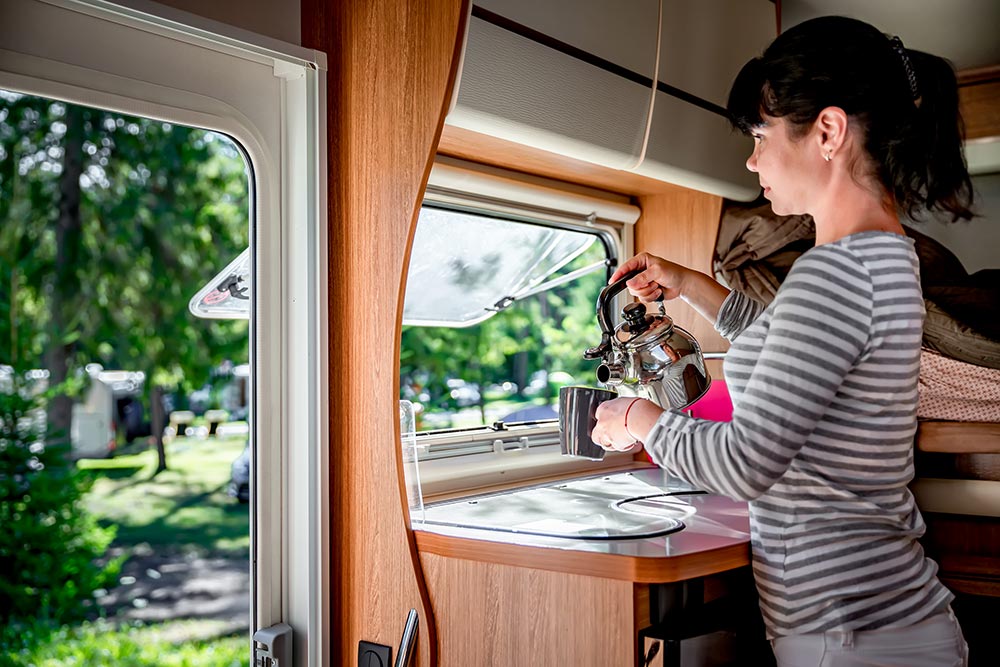Whether you have a static or a touring caravan, safety is clearly an important consideration. Liquefied Petroleum Gas (LPG) is one of the most common fuels used for heating and cooking in caravans of all shapes and sizes.
What is LPG?
LPG is a mixture of propane and butane gases, and it is stored in pressurised tanks or cylinders. It’s popular for caravan use due to its efficiency, versatility, and relatively clean-burning characteristics. LPG is typically used in caravans for cooking, heating, water heating, refrigeration, and other appliances.
Using LPG in caravans offers several advantages, such as being an efficient and cost-effective fuel source. However, it’s important to follow safety guidelines and regulations when using LPG in caravans. The materials used in the construction of any caravan and the relatively confined space inside it make the risks of fire or asphyxiation from carbon monoxide particular hazards.
Gas safety regulation
Specific legislation regulates gas safety in touring caravans that are commercially let and static caravans – whether let to tenants or not – permanently sited on a residential caravan park, a holiday home park, or even a farm. The regulations in force are the Gas Safety (Installation and Use) Regulations 1998 (commonly abbreviated to GSIUR).
As the Gas Safe Register points out, these regulations not only have the force of law but anyone renting a touring caravan must also be given a copy of the trailer’s gas safety certificate.
Maintaining gas safety
Here, then, are some tips and suggestions about maintaining gas safety in your caravan – whatever your level of static or touring caravan insurance, you are still responsible for taking every possible measure to reduce the risks of fire or the escape of poisonous carbon dioxide:
Touring caravans
- many safety precautions are a matter of common sense – never search for a gas leak with a naked flame, or smoke whilst changing gas cylinders;
- if you suspect a leak, put washing up liquid on the hose or fitting and watch for air bubbles that help pinpoint the leak;
- gas cylinders – especially larger ones – should preferably be kept in a secure on-board locker;
- periodically check the gas supply regulator and the pressure at which it is designed to operate, remembering, too, that hoses deteriorate over time – and then, of course, need to be replaced;
- don’t use gas-fired barbeques (fuelled either by the caravan’s supply or an independent cylinder) under the awning of your caravan, because of the risk of fire and often poor ventilation which may encourage a build-up of smoke and carbon dioxide – this may be a particular temptation when attempting to shelter from a typically British summer downpour;
- adequate ventilation is crucial to prevent the build up of gas fumes. Ensure that vents and openings are clear and not blocked by any obstructions. Proper airflow will help to dissipate any potential gas leaks and reduce the risk of carbon monoxide build up;
- follow the manufacturer’s instructions when using gas appliances. Don’t use appliances for purposes they weren’t intended for. For instance, don’t use your oven to heat the caravan, as this can lead to safety hazards;
- while cooking, ensure that the caravan’s cooking area is well-ventilated, and keep flammable materials away from open flames. Never leave cooking unattended;
- familiarise yourself with the location of the emergency shut-off valve for the gas supply. If you suspect a gas leak, shut off the gas supply immediately and ventilate the caravan by opening doors and windows;
Static caravans
- all of these safety considerations apply equally to the gas you use in your static caravan;
- bear in mind, too, the potentially greater and more sustained use a static caravan might experience, so the possibilities of wear, tear and deterioration in supply hoses and fittings may be greater;
- an increasing number of static and residential caravan park owners now insist that any caravan berthed on its site must have an annual gas safety inspection;
- as we have already noted, if your static or touring caravan is let to paying guests, the law requires that the caravan has a valid annual gas safety inspection certificate, completed by a registered Gas Safe engineer.
Carbon monoxide
Carbon monoxide is an odourless, colourless gas that can pose serious health risks if not properly managed. It is a toxic gas produced when carbon-based fuels such as gas, oil, coal, and wood don’t burn completely. It can be emitted from common appliances found in caravans, including gas stoves, heaters, ovens, and even engines if you’re using a caravan with an integrated motor.
The escape and build-up of carbon monoxide may result from a number of causes – including, the way a gas appliance is being used and the efficiency with which it is operated, inadequate ventilation, inadequate flues, and a lack of routine maintenance and servicing.
Risks of carbon monoxide poisoning
The dangers of carbon monoxide cannot be overstated. Exposure to even low levels of CO can lead to symptoms such as headaches, dizziness, nausea, confusion, and fatigue. Prolonged exposure or high concentrations can result in severe health complications and, in extreme cases, can be fatal.
Carbon monoxide detector
Highly toxic carbon monoxide (CO) is a peril in both touring and static caravans and a CO detector might be considered a vital part of your safety equipment. Some caravan insurance policies may be invalidated if no CO detector – or fire alarm – is installed.
Further reading: Carbon monoxide dangers.
Summary
Gas safety is a vital consideration for any caravan owner and a failure to take adequate and reasonable steps to use and maintain gas supplies and appliances may seriously affect your caravan insurance cover – or invalidate it altogether.


